The continuing rebellion shifted after Pelee Island, as the leadership changed and William Lyon MacKenzie separated himself while living in Rochester while out on bail from his arrest in Buffalo following the evacuation from Navy Island. The Rebel Cause fell under the leadership of the Council of Thirteen. A mixed group of Canadian and American sympathisers. However, their actions against Upper Canada and their behaviour in the American cities had forced them to seek shelter in the rural areas along the border. Charles Duncombe had been working in the east and was spreading a new secret society based on a French-Canadian society to spread the word of the rebellion and attracted many to the cause. With strong support in the rural areas, the rebels shifted to pirate style raids to gain needed supplies, but their main goal remained to seize power in a meaningful way, even if it meant sending both England the United States to war. But could they do that without the strong leadership that was provided by William Lyon MacKenzie and John Rolph? Of the original rebel leadership, only Duncombe remained, and he was busy on his mission. The task fell to disgraced British veteran Donald McLeod; another Canadian turncoat turned pirate Bill Johnston, Samuel Chandler who met Duncombe through their connection to masonry, plus a handful of American supporters. But they did share a vision of a new Republican government in Canada and revenge for the actions taken against them.
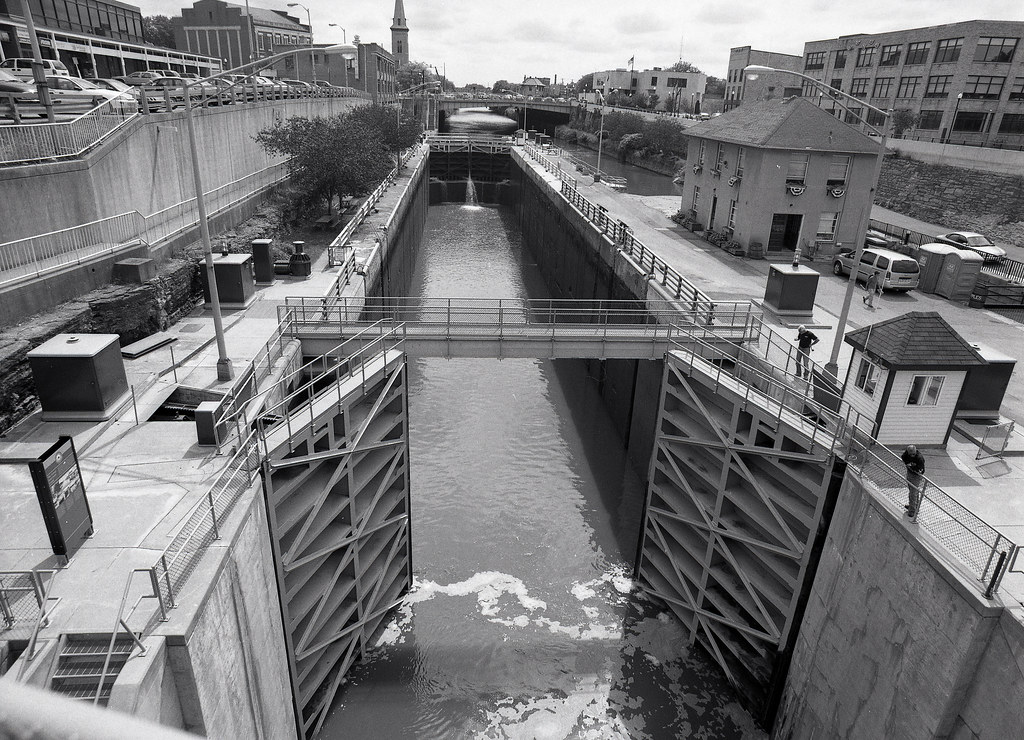
Pentax 645 – SMC Pentax A 645 35mm 1:3.5 – Kodak Plus-X Pan @ ASA-125 – Processing By: Silvano’s
Johnston had returned to his old haunts through the St. Lawerence River Valley. He earned a fearsome reputation in the Anglo-American War of 1812, where he had amassed a fortune in both legal and illegal trade, but his connections to the United States had many second-guessing his loyalty, so he turned coat and sold his services to the Americans. Donald McLeod and Bill Johnston worked well together having formulated the failed invasion of Fighting Island in February. But they saw a new opportunity to seize a ship that could both be armed and be used to transport men and supplies, their target, the Robert Peel a civilian steamship that had become somewhat of an icon on the St. Lawerence River. Built-in Ogdensburg a year earlier now operated between Toronto and Brockville. Her Captain, John Armstrong knew and respected in both Canadian and American ports of call, but among the rebels, the rumour circulated that he supplied intelligence for the British Government on rebel movements. The capture of Armstrong and the Robert Peel could lend an air of credibility to Johnston’s role as head of the Republican Navy since all he operated at the moment was a small flotilla of longboats and bateaux. Johnston operated out of his island camp, named Fort Wallace on Wells Island. He knew the ins and outs of the river and had tracked the Peel’s route well. Johnston and his band of rebels kept their distance, hiding among the thousand islands and then tailing the Peel on the night of the 29th of May. And while the Peel did not spot them, others did. They told Captain Armstrong as such when he stopped at Moore’s Landing on Wellesley Island to refuel. Armstong refused to take the warning; he had a timeline to maintain and passengers and cargo to deliver on time to Toronto. Little did anyone know that Johnston had landed opposite of Moore’s Landing and made his way through the rough forest. And while many lost their way, he had enough to launch his attack. Charging out of the darkness and onto the steamship the crew tried to put up a fight but rather than risk losing their life or the life of a passenger they surrendered and forced from the ship at the end of guns, pikes, and swords. Requests to reclaim their belonging were met with death threats. Cutting the ropes the rebels let the Peel drift, planning on meeting an experienced crew who could restart the ship’s boiler. But when they failed to show, he had no choice. Setting the Peel ablaze they escaped aboard their ships and let the ship burn to the waterline. The only good thing is that the Caroline was avenged.
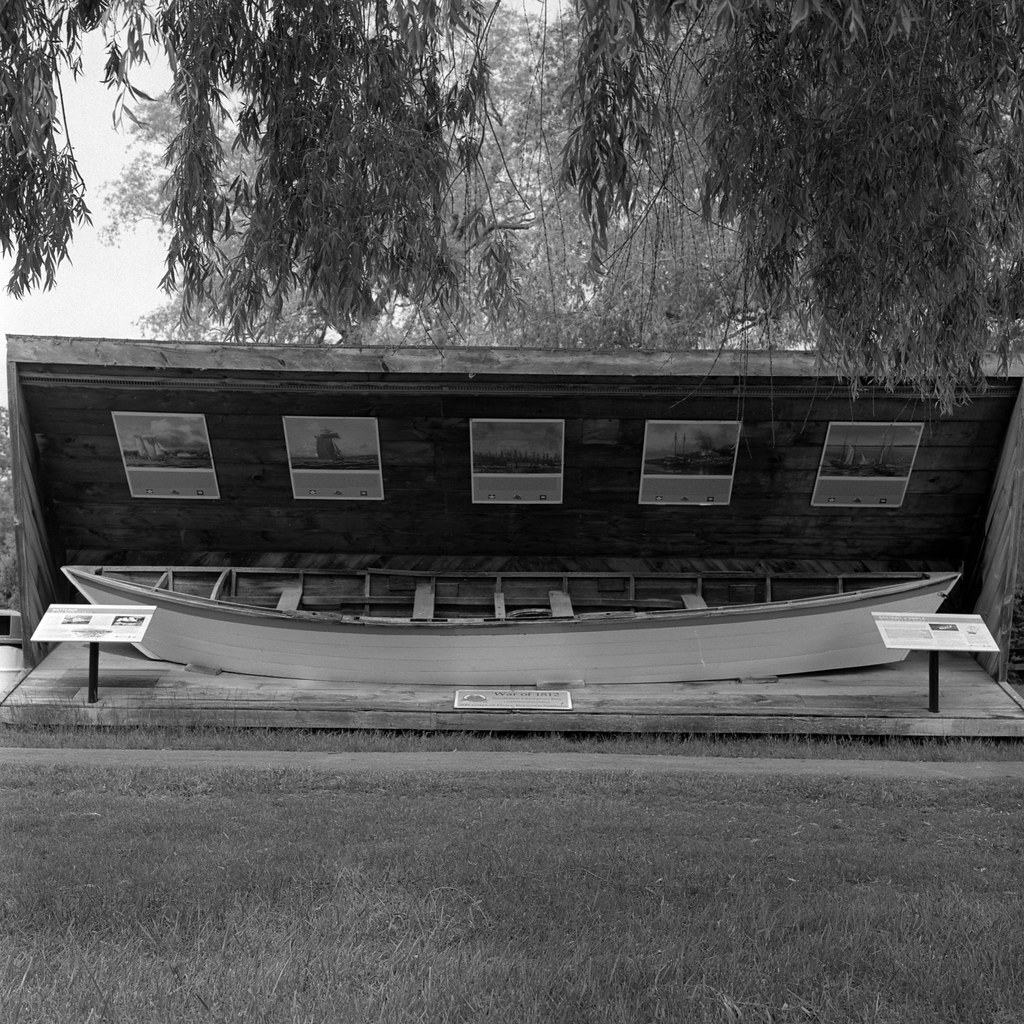
Rolleiflex 2.8F – Carl Zeiss Planar 80mm 1:2.8 – Kodak Tri-X 400 – Kodak Xtol (1+1) 9:00 @ 20C
An attack on a Canadian ship in American waters the Rebels hoped would see the British react violently towards the Americans; it did the opposite both sides agreed that Johnston had to be stopped and issued arrest warrants and bounties on his head and his gang of pirates. But as before both Johnston and McLeod were able to slip away free without interference or capture. McLeod would revisit the offer of Samuel Chandler; Chandler again held up the fact there was a large number of rebels in the Short Hills region and that if they could get enough locals onboard and incite revolt among the First Nations of the Grand River, they might have a chance to force a new government. McLeod sent Chandler back to Saint Johns in Upper Canada to gather local support while James Morreau and Benjamin Waite would gather the needed men and supplies in the United States and then join Chandler. On the 7th of June, Morreau had a large body of armed men ready to cross from Lewiston, but the word of an Army Patrol on their way scattered the men. When Morreau regrouped several days later, less than half the men showed up; he crossed anyways this time from Grand Island. Chandler would be there to meet them and guided them through the back ways away from the number of militia patrols that guarded the frontier. Both food and shelter were plentiful as they moved from friendly farm to friendly farm eventually reaching the Winchester Swamp where they would set up camp. From the swamp Morreau would distribute the usual propaganda, asking for support from loyal Canadians, informing them (falsely) that both Fort Mississauga and Butler’s Barracks had fallen under Republican control and now they should join in the liberation of the Province from the tyrannical rule of England. They also sent these notices to the Iroquois of the Grand River. This time, true to Chandler’s word the local population, at least some, would send aid and a few even joined the small band. But not nearly in the numbers promised by Chandler, but the small amounts allowed for each man to have several weapons at their disposal. But it also would be passed along to the local military commanders; Major Drive would sound the alarm. Calling out the local militia units and bring in help from the Queen’s Lancers who were redirected from Queenston to aid in searching the area. When McLeod learned that Morreau had crossed a second time, he immediately sent his aide, Linus Miller, to bring Morreau, Waite, and Chandler back to the United States as they also learned that a large force was now on the hunt for them. Miller would arrive with McLeod’s ordered, Chandler and Morreau were ready to accept the command and escape back to the United States. But after weeks of sitting around in a swamp others wanted to do some damage. Morreau would give up authority to Jacob Beemer and follow his direction. Miller had little choice but to go along.

Mamiya m645 – Mamiya-Sekor C 150mm 1:3.5 N – Ilford FP4+ @ ASA-100 – Kodak D-23 (Stock) 6:00 @ 20C
Beemer wanted to strike at the local Tory supporters and put some fear in the population, hopeful sway some who were on the fence towards their cause. The small rebel force would split into three; the first two would move out and attack two local farms, that of the Davises and the Overholts. A third would wait and then march towards the Ousterhout Inn where they learned a detachment of Lancers had set up their headquarters. After dark on the 20th the Rebels set out for their attacks, Beemer’s group struck the Overholt Farm, but finding it empty they stole anything of value and vandalised the home and barn. The second group under Abner LaLonde had better luck at the farm of John Davis who was hosting a party. While John managed to evade capture, his other family and guests were not so lucky and were sent under guard to the rebel’s camp. With the dawn creeping closer, the three groups converged on the Saint Johns schoolhouse, just down the hill from the Inn. In the darkness of the pre-dawn hour, a single trooper stood watch outside the Inn while another pair were waiting inside to respond to any alarm. He must have seen something to shout a word of challenge into the darkness, not wanting to play a ruse, Beemer ordered the rebels to open fire. The shots alerted the rest of the Lancers who roused and returned fire. Both sides kept up a high rate of fire as the Lancers barricaded themselves inside the Inn. Beemer wanting to force the issue had his men charge the inn and broke through the front door, the Lancers fell back up to the second floor. As the inn filled with the acrid smoke, the detachment’s commander, Sergeant Robert Bailey ordered his men to cease fire. Beemer seeing the chance sent one man up the stairs who was promptly shot through the neck. The firefight lasted another hour, the rebels running low on ammunition decided to set the Inn on fire. Fearing for their lives, the Lancers threw down their arms and surrendered. The rebels shouted in triumph and rounded up their new prisoners, stripping the lancers of their uniforms, Linus Miller claiming the uniform of Sergeant Bailey. The Lancers and the previous night’s prisoners taken to the Inn of Eber Rice, a supporter of the rebel cause.
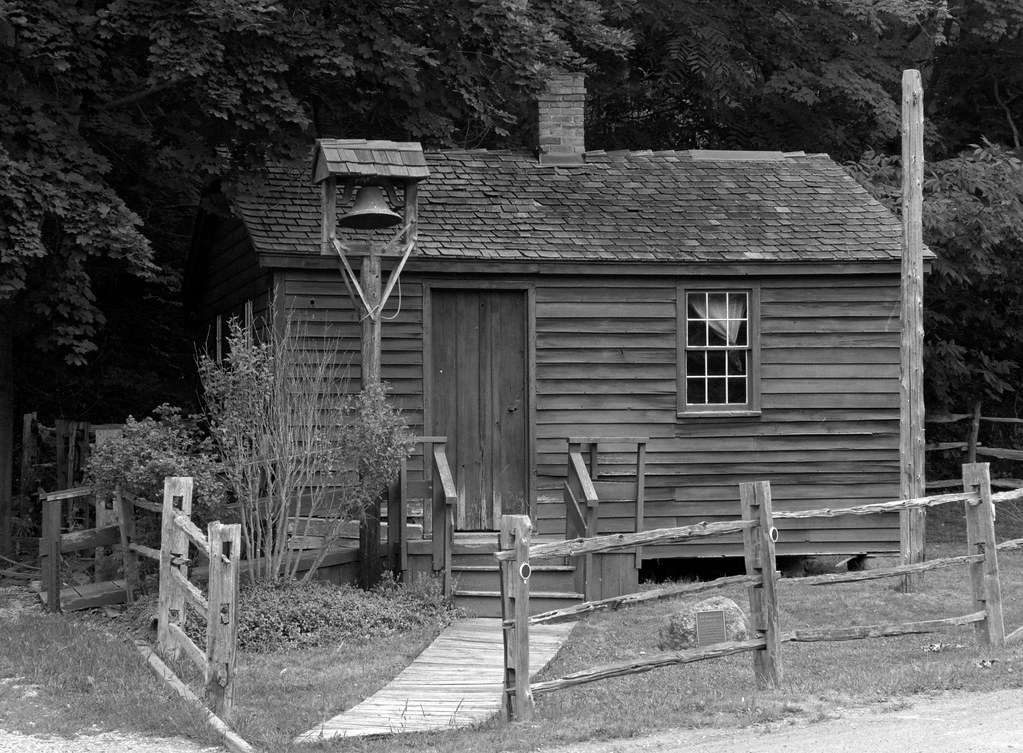
Mamiya m645 – Mamiya-Sekor C 150mm 1:3.5 N – Ilford FP4+ @ ASA-100 – Kodak D-23 (Stock) 6:00 @ 20C
The rebels discussed what they should do with their prisoners. The more violent in the group suggested they hang the Lancers as a warning to other British and Militia troops. While men like Morreau and Chandler simply wanted to let them go on the promise they would not take up arms against the rebels. What the insurgents had not realised is that the alarm had been raised and militia and regular troops were converging on the area. Even the soldiers of the Grand Bend were out looking for them. Chandler would be arrested first after leaving the inn and heading back to their camp in the Winchester Bush. Morreau would retake control and order the men to scatter, releasing the prisoners in the process. The rebels faced a harrowing flight, while some did manage to sneak across the border. Others were not so lucky, Morreau was arrested in Dunnville having maintained a disguise but was recognised by another rebel, Miller and Waite were both detained in Wainfleet. Within the week the last remaining rebels were rounded up and were held in the Niagara Jail awaiting trial.
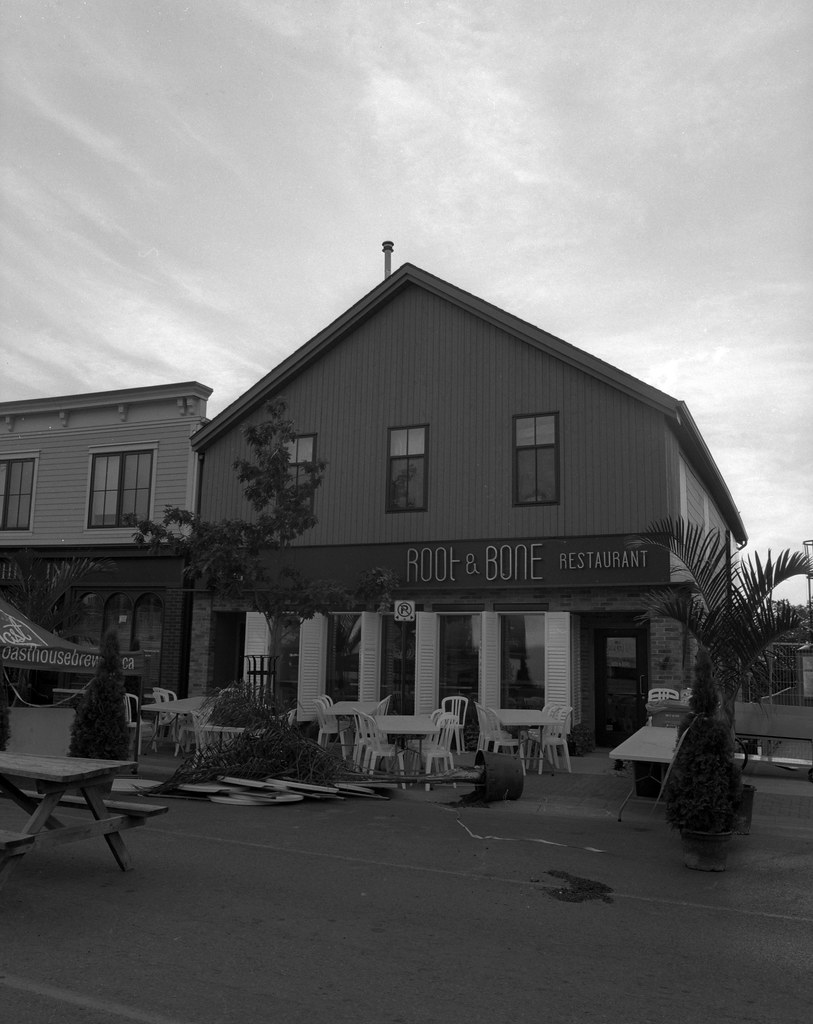
Mamiya m645 – Mamiya-Sekor C 45mm 1:2.8 N – Ilford FP4+ @ ASA-100 – Kodak D-23 (Stock) 6:00 @ 20C
But the rebels were not done and thanks to the lack of centralised control on the rebel cause, allowing splinter groups to grow and take matters into their own hands. One such group began to operate out of Gibraltar Point in Michigan. By July, they had stolen a pair of schooners and began to operate along the St. Claire River and Lake. These raiders started off taking only supplies from local warehouses. Goderich would be first as it was a major hub for trade between Upper Canada and the United States. The schooners gave the rebels a great deal of mobility in targeting smaller farms and settlements along the river. But soon they turned violent, they killed a militia officer in his home and started to take prisoners. A small group of rebels landed at Port Lambton, taking control of Nugent’s Inn and hoisting the Patriote Tri-Colour. The occupation lasted only a few hours as the nearby militia responded and arrested the group when they surrendered. By the end of the month, the rebels having gained little decided to step up their actions and landed at Sombra. They broke into the General Store, captured the owner and forced him to not only open his warehouse by the town’s government warehouse. The rebels helped themselves to food, dry-goods, arms, and ammunition. Then loaded everything onto their schooners and took the store owner with them. The militia arrived too late, but they were met with an envoy from the United States, the local marshall offered to chase down, arrest, and return the goods. The local militia officer seemed to agree with the American; several soldiers decided to take matters into their own hands. With the help of the Iroquois of Walpole Island, they stole across the river locating the rebel schooner they gave chase forcing her to run aground on the American shore. The gunfire having altered the Michigan Militia who arrived in time to prevent the Canadians from coming ashore. They agreed to wait while the Americans chased the rebels down returning the goods and the hostage. The grounded schooner was burned to the waterline, and the camp at Gibraltar Point scattered.
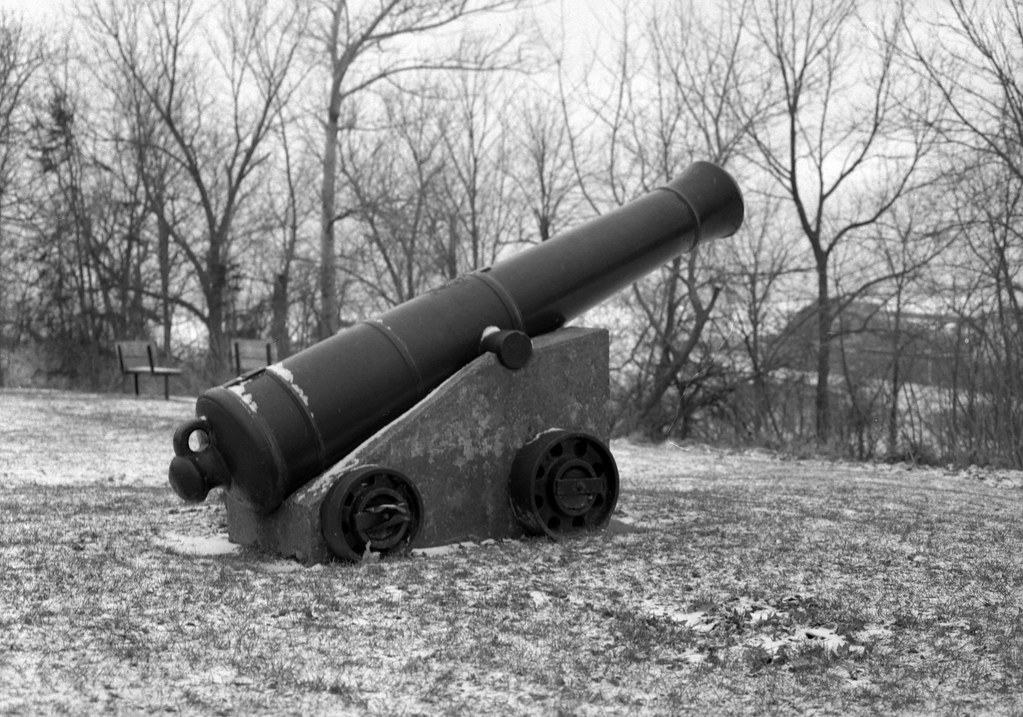
Mamiya m645 – Mamiya-Sekor C 1:2.8 f=80mm – Ilford HP5+ @ ASA-400 – Kodak HC-110 Dil. H 10:00 @ 20C
By the end of the summer, the raids had ended as Charles Duncombe returned bringing a new organisation to ally the rebel cause to the establishment of a republic in Canada. Known as the Hunter Lodge and based on a similar system of secret lodges organised by the Patriotes of Lower Canada. But for the men captured during the Short Hill Raids, the rebellion had ended. For Morreau and Miller, it ended with a hangman’s noose. For Chandler and Waite they were sentenced to death but would be commuted to a life in exile in Van Dieman’s Land, today known as Tasmania. They would both receive a pardon in 1841, but having already escaped the penal colony lived out their lives in exile in the United States. Bill Johnston after getting bored of the pirate’s life surrendered to the Americans, but never faced charges and eventually escaped. He would remain a Tavern Keeper and Smuggler in the United States until his death in 1870. McLeod would also receive a pardon for his roll in the Rebellions and worked for the Canadian Government until his death in 1879.
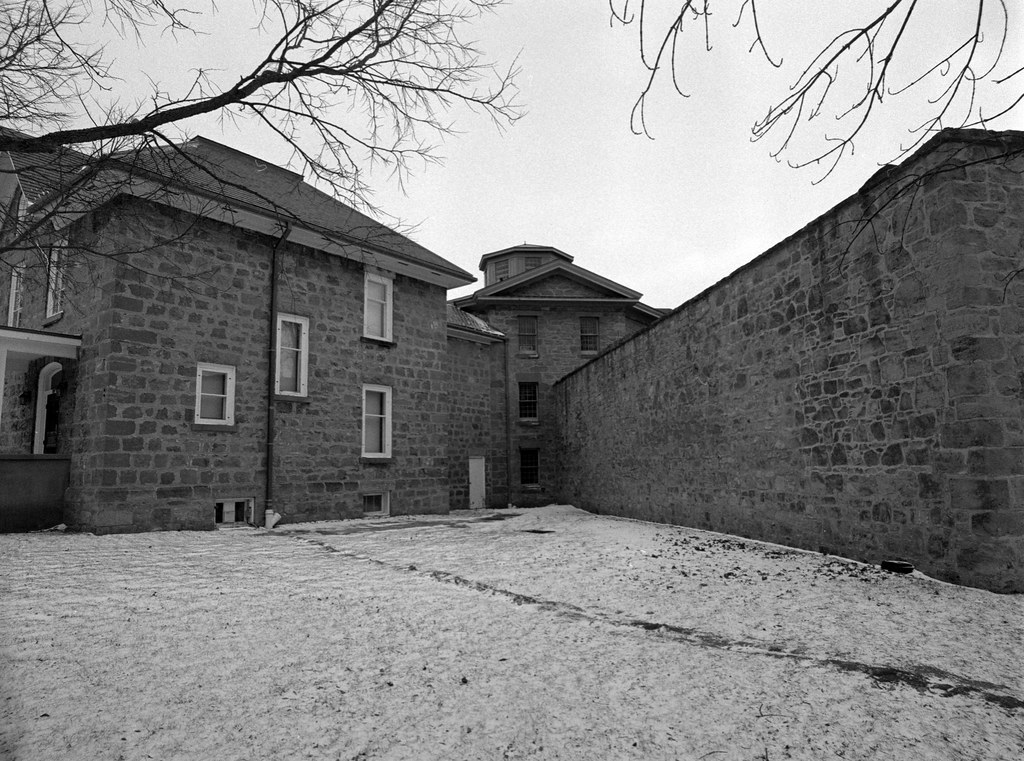
Mamiya m645 – Mamiya-Sekor C 35mm 1:3.5 N – Ilford HP5+ @ ASA-400 – Kodak HC-110 Dil. H 10:00 @ 20C
While today there is nothing overly obvious to remember the raiding actions during the middle of the Patriot Wars, you can still find a lot if you know where to look. Wells Island would take on the name Fort Wallace Island and is private land today, and I don’t believe there are any remains of Johnston’s camp. The settlement of Moore’s Landing is still a New York Village, one of the main roads through the town takes the name Peel Landing. The Robert Peel still lays at the bottom of the St. Lawerence River at a depth of 125 feet and can be visited if you’re a seasoned wreak diver. In the Short Hills Region, there is much more to see; the Saint Johns school house still stands as part of a large outdoor education centre, a marker stands nearby where the Chandler house once stood. The marker is a bit overgrown, and the descriptive plaque has fallen over. There is supposed to be a plaque where the Ousterhout Tavern once stood; however, I was unable to locate. But with the help of the Fonthill Historical society, I was able to locate the original tavern. The building had been moved into downtown Fonthill sometimes in the early 20th-Century, and while it no longer looks like the original building today, it is home to the Root and Bone restaurant. On the St. Claire River only a single plaque to the raids stands at Sombra; however, I was unable to visit the area due to time constraints.